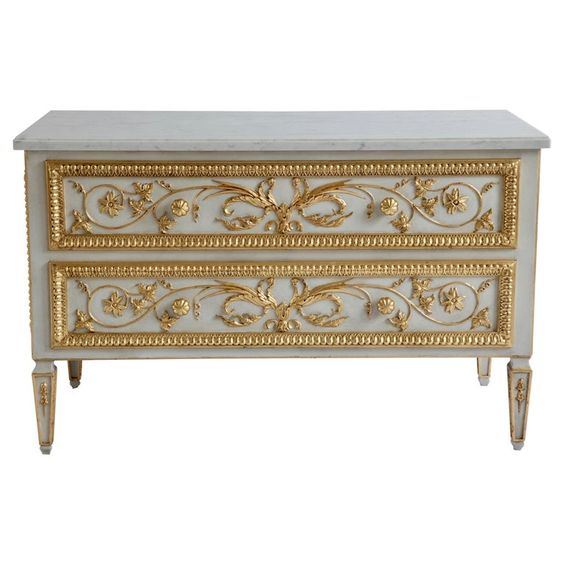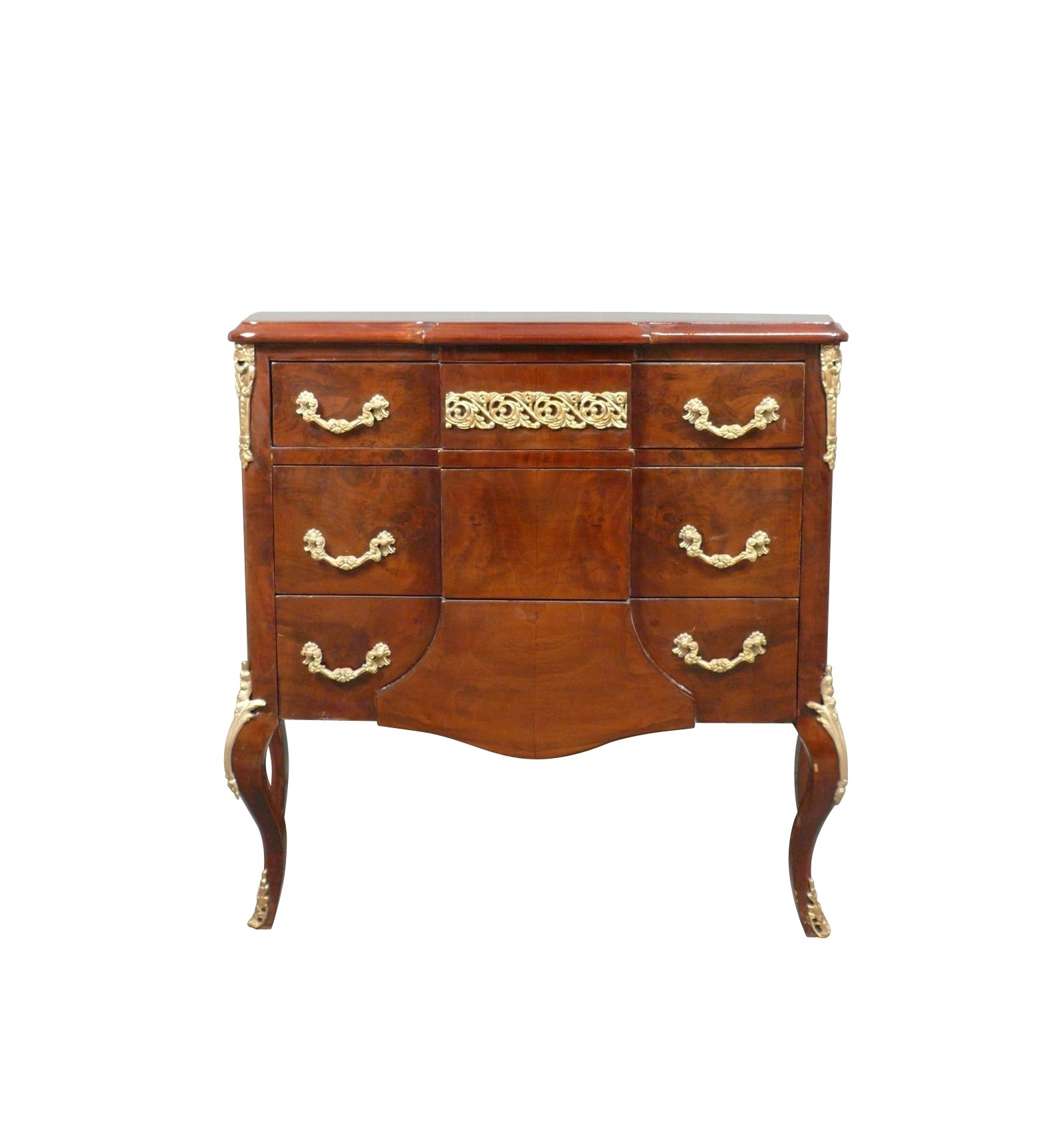Furniture from antiques is very popular for furnishing the dwellings. They are very aesthetic and of better quality. Famous louis XVI painted dresser designs have very particular designs and finishes to ensure perfect interior decoration.
The Louis XVI period
Louis XVI was born in Versailles on August 23, 1754. He died on January 21, 1793 guillotined in Paris. He was king of Navarre and France from 1774 to 1791. He is the last French king of the Old Regime. He was the son of Marie-Josèphe of Saxony and the dolphin Louis de France. He was married to Marie Antoinette of Austria in 1770.
He became king at the age of nineteen after the death of his grandfather Louis XV. He inherited a kingdom almost bankrupt and had to launch various financial reforms. Some of these reforms failed in the face of adversity from the clergy, parliaments, the court and the nobility. He is an example of people's rights because of the abolition of torture and serfdom.
He was the author of the greatest military victory over England. He is one of the very active supporters of American separatists. He is well known in his crucial role in the French Revolution. He ordered the convening of the general states in 1789 in order to refinance the state. Sentenced to death, he was guillotined in Paris on Revolution Square. His wife Marie Antoinette suffered the same fate.
The Louis XVI style
The Louis XVI style is a style of furnishings and decoration that originated in France from 1774 to 1785. This period coincided with the reign of Louis XVI.
Such a style is part of the European movement of the second half of the 18th century characterized by the return to classicism. This style abandons the well-known contoured lines of the Louis XV Style. There is indeed a certain return to ornate lines, straight, with a clear lightness. Tired of the exuberance and originality of the Rocaille style, the new king of France was in love with simplicity and naturalness.
The style adopted during this period of great sobriety is characterized by balanced furniture fairly proportionate. They are geometric in shape, namely the rectangle, the square, the round and the oval very fashionable. The production of this furniture was very abundant and carried out with fantasy and taste. The models made are inspired by the purity of the ancient forms from the remains of Pompeii and Herculaneum.
Mahogany is more used in the Louis XVI style. This wood is moist, speckled, bramble or tracked. Designers of Louis XVI furniture models make wood varnish or wax. Ebony, which was outlawed in the meantime under the Regency, has returned to fashion. Other woods such as beech, rosewood, maple, waxed walnut, yew, oak for buildings and amaranth are used for drawers and bottoms. Ordinary furniture is well polished and some are marked or plated.
To make this furniture, the wood is lasked or painted with light-coloured paints. The furniture is white, ivory, grey, grey-blue, lilac, green, pink or embellished with gold fillets.
Painted dressers
Louis XVI dressers are painted. They usually have a flat rectangular façade. Straight lines are made of mahogany. Their top is white or grey marble with chiseled bronze motifs.
These painted dressers are between 70 cm and 1 m 20. There are two types on the market: two-drawer dressers with high feet and three drawers with low feet. Louis XVI dressers have a top, balustre or crowbar pedestal extending into the belt or studs. The most common dressers in the Louis XVI style are straight and rectangular.
They often have three small drawers placed at the top with bronze rosettes. The distinctive characteristic patterns are the grooved columns at the sides and the rectangle at the incoming angles. There are also other forms of Louis XVI chest of drawers made of precious wood.
Some models are half-moon made on an arc plane. The half-moon is backed by the trumeau. The drawers in the middle form on the protruding façade. Models are also found on the façade with two to three drawers. On each side, we have two stacked and side shelves.
The painted Louis XVI dresser is a wooden piece of furniture with a particular drawer in style. The dimensions of the feet make these furniture less cumbersome. In the 16th and 18th centuries, the lock used was bronze and the façade was sober in colour.

A storage unit for the bedroom or living room
The storage furniture is very useful for both the bedroom and the living room. It is used to put the house in order. This is the usefulness of dressers in marquetry
The dressers in marquetry
The dressers in marquetry are a speciality of the dolphin as well as of eastern France, Alsace and Lorraine. They are very faithful to the aesthetic imposed by Louis XIV. The Dauphiné is a land of cabinet-making where the dynasty of the Hache reigned.
She has managed to develop a rather original work that puts the marquetry in the spotlight. The dressers in Dauphinoise marquetry keep a massive line quite close to the Louis XIV style. There is also an influence of Louis XV in the curve.

Fruit woods are used and associated mainly in decorative marqueteries. The Hache dynasty uses Italian-shaped marquetry. The dressers are decorated with flowers and rinsings. Wood magnifying glasses are associated with tinted woods.
Ash or walnut antlers are used to make dressers in marquetry. On most models, grounding is very sober. The décor leaves very little room for sculpture.
Dolphin cabinetmakers show ingenuity by mixing light and dark woods. The dressers in the East are influenced by Germany and Flanders.
The various old dressers
The old dressers are very diverse given the reasons. Manufacturers use rustic attributes, arrow-pierced hearts, birds, pipes, subjects, musical instruments, rosettes, pine cones, tambourines, wicker baskets, acanthus leaves, rosaries, ribbon knots, interlacings, flower garlands, palmettes, pearls, Greeks, flutes, animal heads, pastoral attributes , subjects and medallions.
The bronzes are used discreetly and finely. Ancient dressers are gilded with varnished or fine gold. The main motifs are knots, ribbons, the head of ram, lion, eagle, mermaids, crowbars or rose wreaths.
The marbles are veined, white, grey or hand-carved. The feet are light and straight. They end in an eagle's greenhouse, a hoof or a top. They are connected by a cube connecting to the furniture. They are decorated with a rosette.
The transition dresser
The transition-style dresser is characterized by crowbars as well as Greek motifs. Its case is rectangular and its feet curved. Sometimes there is a central jump on the front. Transition-style furniture appeals to luxury furniture enthusiasts.
They have a neoclassical décor inspired by the ancient discoveries of the last third of the 18th century. The decorative motifs used are inspired by Greco-Roman antiquity.

The Empire Dresser
The Empire dresser on the other hand is very massive. It is quadrangular and is characterized by three drawers, the fourth is housed in the belt. The drawers are placed behind two fronts. The feet are in lion claws and a marble tray.
The bronze decoration is made at the locks and draw handles.
Where to buy a Louis XVI dresser?
To buy a painted Louis XVI dresser, you have to go to an antique dealer. He is a specialist in the field.
Purchases can be made online at reputable shops. However, it is necessary to ensure in all cases the authenticity of antique furniture. Reference antique dealers offer their service to antique furniture lovers. They offer their customers a whole collection of quality antique furniture. You can find in our store to buy a reproduction of a Louis XVI dresser signed once by a great master of cabinetry.
These pieces of furniture before they are put up for sale undergo a double check to ensure their authenticity. Sellers are rigorous in making buyers fully satisfied with their purchase.


